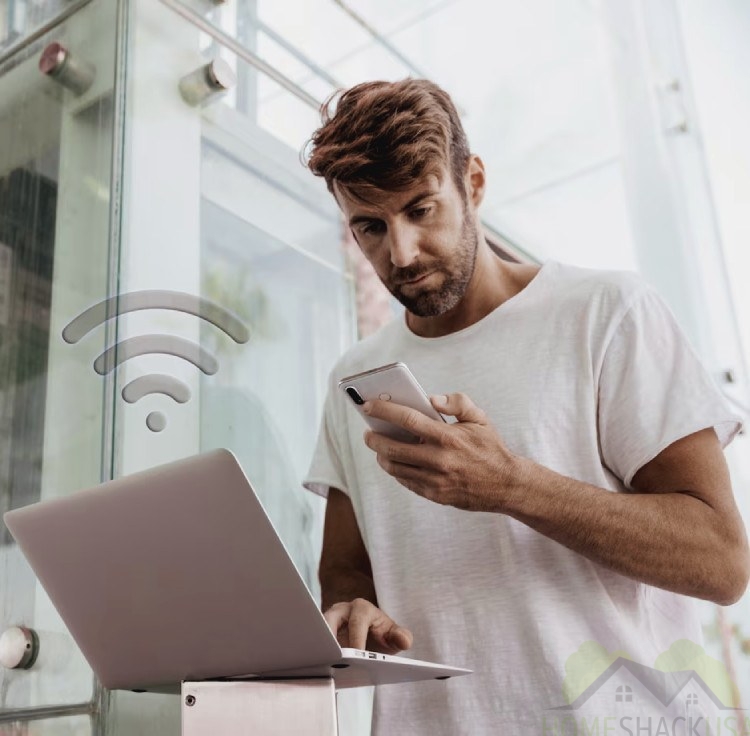In the digital age, we often spend most of our time online. Not surprisingly, social media has become an integral part of our lives, enabling us to share experiences and impressions, connect with friends and family members, and stay updated on current events.
However, as we share more about our daily lives online, it’s crucial to maintain a balance between social engagement and safeguarding our home’s security.
In this article, we will explore and discuss how to be more cautious on social media and how to implement some clever strategies to protect your home from prying eyes.
Social media and home security -a delicate balance
Social media platforms offer a convenient way to share moments, but they also expose too much personal information that can inadvertently jeopardise your home’s safety.
While it’s natural to share exciting travel experiences or visits to different locations (yes, we all know that shared joy is greater), be cautious about revealing your current location in real-time.
Posting about vacations or extended absences can alert potential burglars that your home is unattended, making it a target for break-ins.
Try to limit personal information
Review your social media profiles and assess the amount of personal information you disclose. In this case, less is more.
In other words, try to minimise the sharing of details such as your home address, phone number, and specific daily routines and other personal information. Cybercriminals can exploit this information to target your home.
Take advantage of the opportunity to customise your privacy settings
Nowadays, all social media platforms offer various privacy settings that allow you to control who can view your posts and profile.
Customise these settings to limit the visibility of your content to trusted friends and family rather than making it publicly accessible.
Use location services wisely
While sharing your location can be convenient for meeting up with friends or checking in at favourite spots, it’s essential to use location services judiciously.
Disable location tracking for apps that don’t require it, and consider turning it off when not needed.
Home safety – protecting your home from online risks
In addition to practising discretion on social media, it’s crucial to implement measures to safeguard your home from potential online risks:
Secure your wi-fi network
Your home’s Wi-Fi network is the gateway to your connected devices. Ensure it is protected with a strong, unique password and encryption. Regularly update your router’s firmware to patch vulnerabilities.
Beware of phishing attempts
Be cautious about clicking on links or downloading attachments from unknown sources, as these can contain malware or phishing attempts that aim to steal your personal information.
Install security software if needed
Invest in reputable antivirus and security software for your devices. These tools can detect and block online threats, ensuring your personal information remains secure.
Use smart home security systems
Consider installing a smart home security system with features like security cameras, motion detectors, and alarms. These can provide real-time alerts and remote monitoring, enhancing your home’s physical security.
Be cautious with smart devices
Smart home devices, while convenient, can also be vulnerable to cyberattacks. Regularly update their firmware, change default passwords, and secure them behind your home network’s firewall.
Educate your family
Ensure that everyone in your household is aware of online safety practices. Educate your family members about the potential risks and the importance of protecting personal information.
Neighbourly awarenes – for more safety, maintain healthy relationships with your neighbours
While technology plays a significant role in home security, traditional neighbourly awareness remains essential.
Building strong relationships with your neighbours can create a sense of community security. Here are some ways to foster neighbourly cooperation:
1st: Neighborhood watch
Participate in or establish a neighbourhood watch program. This collaborative effort can deter criminal activity and encourage community members to look out for one another.
2nd: Communication – discuss any potentially suspicious activity
Maintain open lines of communication with your neighbours. Share contact information, discuss any suspicious activity, and support each other in maintaining a safe neighbourhood.
3rd: Home checks – ask a trusted neighbour for help
When you’re away, ask a trusted neighbour to keep an eye on your property. They can collect mail, check for any signs of unusual activity, and help create the appearance of an occupied home.
Multi-level safety approach
Maintaining home safety in the digital age requires a multifaceted approach. While enjoying the benefits of social media and smart home technology.
It’s crucial to exercise caution online, protect your digital assets, and educate your family about online safety. Additionally, fostering neighbourly awareness and cooperation can create a strong sense of community security.
By balancing online connectivity with security measures, you can enjoy the best of both worlds—staying connected with your loved ones while keeping your home and family members safe.





